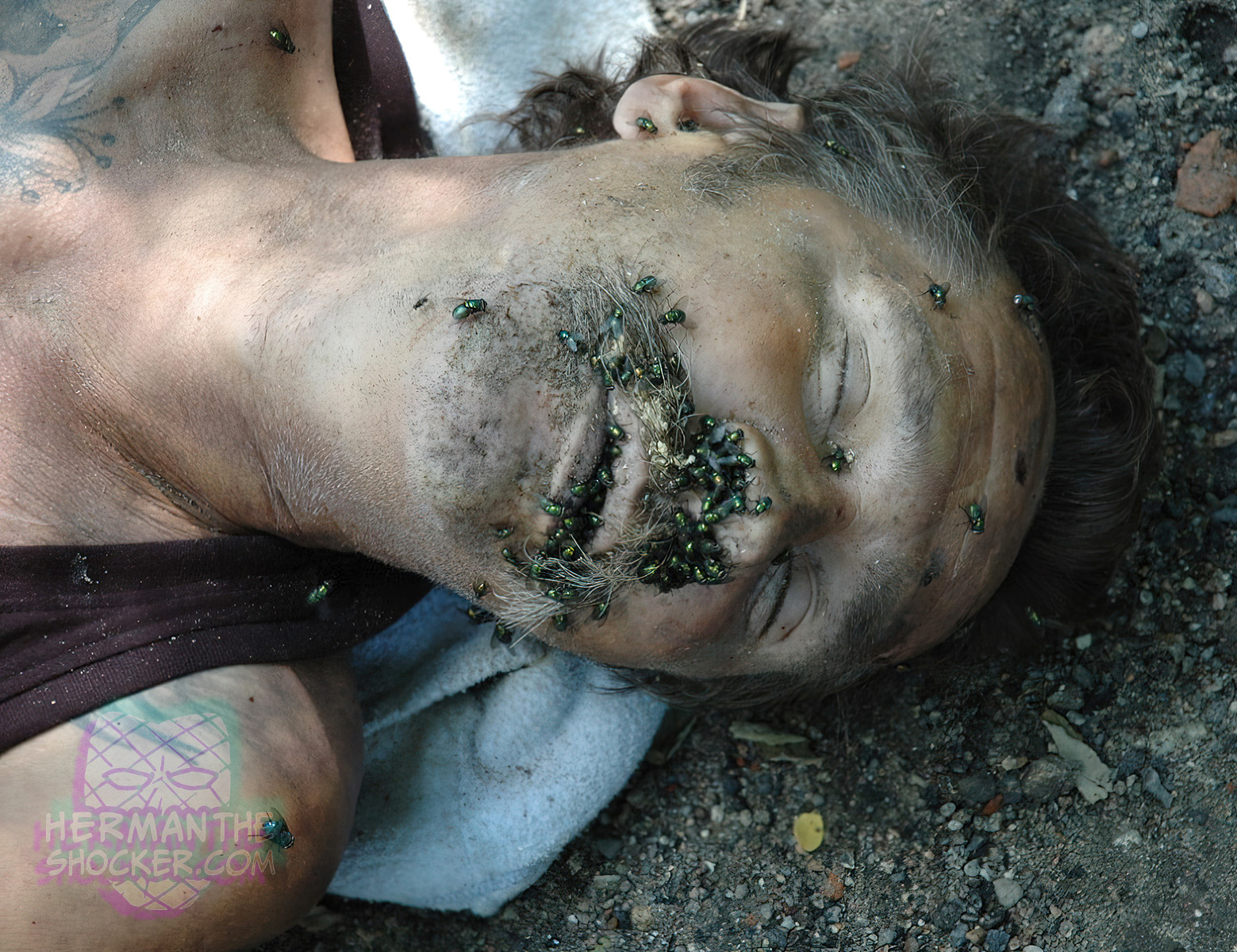The first type of insect to arrive at a dead body is usually a blowfly (Calliphoridae), attracted by body fluids and gases. It lays its eggs within two days after death, so its stage of development – egg, larval stages, prepupal or pupal stage, adulthood – will suggest how long the corpse has been lying undetected. Ambient conditions affect both how soon after death the blowflies arrive and how quickly the maggots develop. The female fly will lay her eggs in the moist locations of the body; eyes, ears, nose and mouth. No info about the dead man in the image.
Latest posts

This individual died and his body was scavenged by a cat, no further info. The phenomenon of postmortem…

Note the bloating and decompositional blisters as well as the greenish discoloration around the area of the abdomen.…






